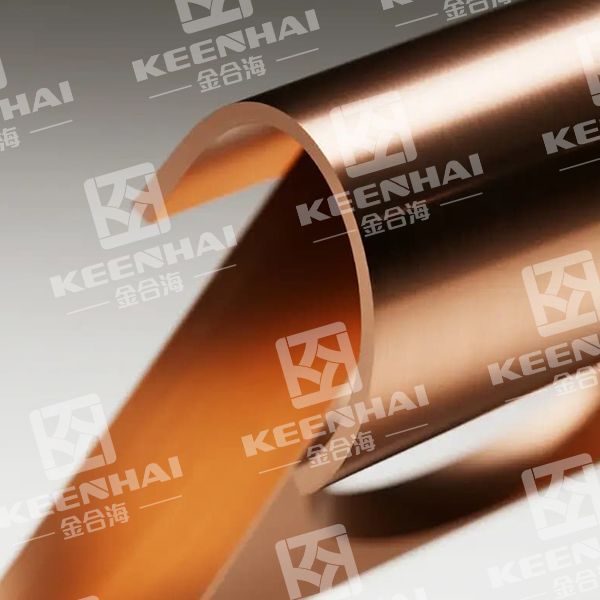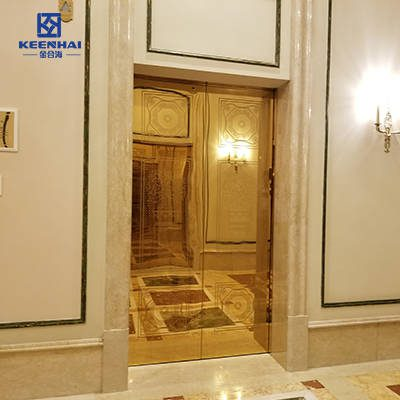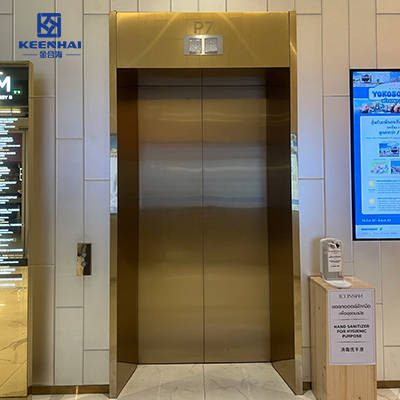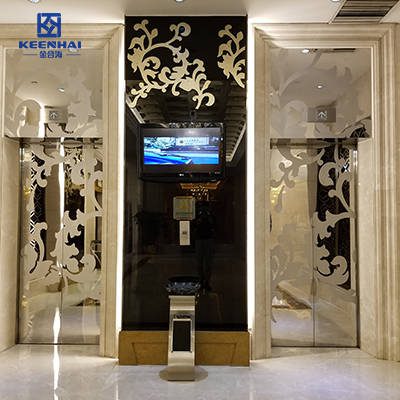In 2025, stainless steel sheet prices range from $2.3–$3.8 per kg, depending on grade, finish, and supplier region. 304 sheets remain the most popular for construction and kitchen applications, while PVD-coated options cost slightly more due to color processing. Always compare factory vs distributor prices before ordering in bulk to get the best long-term value.
1. Current Stainless Steel Sheet Market Overview (2025)
In 2025, the global demand for high-quality stainless steel sheets continues to surge, driven by rapid urban construction and high-end architectural projects. Developers in major cities like Singapore, Dubai, and Los Angeles increasingly rely on stainless steel panels for kitchens, façades, and luxury elevators due to their durability, clean aesthetics, and corrosion resistance. Global consumption has grown by nearly 6% year-over-year, with Asia-Pacific accounting for over 65% of total stainless sheet production.
The demand pattern has also shifted — commercial sectors now favor mirror-finish and PVD-coated surfaces for hotels, shopping malls, and transport hubs, while the residential market shows steady interest in brushed and matte textures. As of early 2025, manufacturers report steady order volumes, supported by strong post-pandemic infrastructure recovery and ongoing investment in public architecture.
1.1 Global Demand and Supply Trends
Across 2025, stainless steel sheet supply remains tight yet stable. Major producers in China, Japan, and India have optimized capacity to meet export orders, while European mills focus on higher-grade products like 316L and duplex stainless variants. In North America, the focus has shifted to domestic recycling and green steel initiatives, increasing production costs but improving sustainability metrics.
Real estate and hospitality industries are still major buyers. For instance, the Marina Bay Towers project in Singapore used over 12,000 square meters of custom-finished stainless panels for interior façades, reflecting the trend toward premium architectural finishes. On the other hand, small-scale manufacturers in South Asia continue to face challenges due to nickel price volatility and logistics constraints.
1.2 Average Market Price Range per Square Meter
The global stainless steel sheet price in 2025 varies based on grade, thickness, and surface treatment.
Below is a general comparison across popular specifications:
| Type / Grade | Common Thickness | Average Price Range (USD/m²) | Typical Application |
|---|---|---|---|
| 304 Stainless Steel Sheet | 1.0–1.5 mm | $42 – $55 | Kitchen backsplashes, elevators |
| 316 Stainless Steel Sheet | 1.0–2.0 mm | $55 – $70 | Coastal architecture, marine use |
| PVD Coated Stainless Sheet | 0.8–1.2 mm | $68 – $90 | Luxury interiors, hotel façades |
| Brushed Finish Stainless Sheet | 0.8–1.5 mm | $40 – $52 | Furniture, interior walls |
On average, the 304 grade sheet (1.5mm thick) costs between $2.4 and $3.8 per kg, depending on finish and order volume. Bulk buyers typically receive discounts of 5–10%, especially when purchasing directly from verified manufacturers.
1.3 Key Pricing Differences by Region
Pricing differs significantly by region in 2025. Asia remains the most cost-effective source, with China and India offering competitive rates due to lower production and labor costs. In contrast, Europe and North America maintain premium pricing, partly because of stricter environmental standards and higher logistics costs.
To illustrate, a 316 mirror-finish sheet that costs $68/m² in Guangzhou might reach $95/m² in Germany after tariffs and transport. Buyers in the Middle East benefit from proximity to Asian suppliers and shorter shipping routes, making it a growing hub for stainless sheet imports used in hotel interiors and commercial façades.
Architectural designers now balance cost with appearance, often choosing regional sourcing to reduce lead time while maintaining quality. For high-end applications like Dubai’s Palm View Residences, architects still prefer imported 316L sheets for superior corrosion performance in humid, saline environments.

2. Factors That Affect Stainless Steel Sheet Prices
2.1 Raw Material and Alloy Composition
The biggest factor influencing stainless steel sheet price is the alloy composition. Grades like 304 och 316 have different ratios of chromium, nickel, and molybdenum, which directly affect cost. For example, 316 rostfritt stål contains more nickel and molybdenum for better corrosion resistance, making it 20–30% more expensive than 304 stainless steel. The global market prices for nickel and chromium also fluctuate, which can cause noticeable changes in the price per kg within a few weeks.
2.2 Sheet Thickness, Grade, and Finish Type
Thicker sheets and higher grades naturally cost more due to greater raw material usage and performance specifications. For example, a 2mm thick 304 sheet might cost around $2.5–$3.5 per kg, while a 6mm thick 316 sheet can exceed $5 per kg. Finish type is another key factor — mirror polished, borstat, och PVD coated stainless steel sheets require extra processing, which can increase the price per square meter by 10–25%.
2.3 Manufacturing and Processing Costs
The production process — from hot rolling and cold rolling to cutting, polishing, and coating — adds to the final cost. Advanced manufacturing techniques like laser cutting, PVD vacuum coating, eller custom color finishes require precision equipment and skilled labor, especially for architectural or decorative stainless steel applications. These processing costs can add anywhere from $100–$300 per ton depending on customization levels.
2.4 Shipping, Tariffs, and Import Taxes
Logistics and trade policies also play a major role in stainless steel pricing. Imported stainless steel sheets from China or India may appear cheaper, but when you include shipping fees, insurance, and import tariffs, the total landed cost can increase by 10–40%. For international buyers, it’s essential to check CIF vs. FOB pricing terms before purchase, as the final cost per ton may vary significantly depending on origin and destination.
3. Stainless Steel Sheet Price by Type and Grade
Overall, prices change a lot depending on alloy, thickness, and finish. Knowing exact grade and finish upfront saves time and money because suppliers price items very differently. Below I break down realistic 2025 ranges you can expect and give actionable buying tips to control cost without sacrificing performance.
3.1 304 Stainless Steel Sheet Price Range
304 remains the most common architectural and kitchen grade. For 2025, expect roughly $42–$55 per m² for typical 0.8–1.5 mm mirror or brushed panels, which translates to about $2.4–$3.8 per kg for 1.5 mm material depending on finish and order size. 304 suits interior use, HVAC panels, and commercial kitchens that don’t face heavy chloride exposure. When quoting, always confirm: (1) exact thickness in mm, (2) finish type, and (3) whether edges are trimmed—these three items alter price materially.
3.2 316 Stainless Steel Sheet Price Range
316 commands a premium because of added molybdenum and higher nickel content for corrosion resistance. Typical market ranges in 2025: $55–$70 per m² for 1.0–2.0 mm sheets, roughly $3.2–$5.2 per kg depending on finish and volume. Use 316 for coastal façades, marine fit-outs, and pools where chlorides or salt spray threaten corrosion. Quick procurement tips:
-
Request price per kg and per m² to compare quotes fairly.
-
Ask suppliers about recycled-nickel content — it lowers cost but keeps performance when certified.
-
Negotiate on lead time: shorter lead times often cost more, so plan purchases in advance.
3.3 PVD Coated and Colored Stainless Steel Sheet Prices
Metall rostfritt stålplåt options cost $68–$90 per m², mainly used in decorative façades and elevator interiors. Check coating warranty, color consistency, and abrasion resistance before purchase.The PVD process adds equipment, vacuum cycles, and QC steps, so expect a 20–40% premium over comparable uncoated finishes. Designers prefer PVD for hotel lobbies and elevator interiors because it delivers stable color and scratch resistance. When budgeting, validate: (1) coating warranty, (2) sample panels under real light, and (3) resistance to abrasion — these factors justify the price delta.
3.4 Mirror vs Brushed Finish Price Comparison
| Särdrag | Mirror Finish | Borstad finish |
|---|---|---|
| Typical thickness (common orders) | 0.8–1.5 mm | 0.8–1.5 mm |
| Price range (2025, USD/m²) | $45 – $68 | $40 – $52 |
| Added processing cost vs raw | +10–25% | +5–15% |
| Best applications | Luxury elevators, reflective façades | Furniture, appliance panels, durable interiors |
| Maintenance sensitivity | Shows fingerprints/scratches more | Hides minor scratches better |
Mirror finishes cost more mainly because of polishing cycles and stricter flatness tolerances. Choose mirror for visual impact, and choose brushed when you want a durable, lower-maintenance surface that masks wear.

4. Cost Breakdown: From Factory to Buyer
Understanding the cost chain helps you find where margins build up. The total price of a rostfritt stålplåt isn’t just about material — it’s a combination of alloy composition, processing effort, packaging, logistics, and markups along the supply route. Here’s a closer look at what each layer really costs.
4.1 Material Cost vs Fabrication Cost
Base material accounts for 60–70% of the final stainless steel sheet price. In 2025, raw nickel, chromium, and molybdenum costs fluctuate daily, especially under London Metal Exchange (LME) trends. For 304 and 316 grades, nickel alone can drive a $200–$400/ton swing monthly.
Fabrication adds another 20–30%, depending on the finish and tolerance. The major fabrication expenses include:
-
Cold rolling and annealing for surface uniformity.
-
Cutting, deburring, and polishing to reach specific finishes such as mirror or brushed.
-
PVD coating or color plating, which can increase total processing time by up to 40%.
Buyers can cut cost by ordering standard thicknesses (1.0 mm, 1.2 mm, 1.5 mm) instead of custom gauges — mills stock these sizes, reducing setup waste and per-unit processing fees.
4.2 Packaging, Transport, and Logistics Fees
Even though logistics seem minor, they can add 8–12% of total landed cost. Stainless steel sheets are heavy and easily scratched, so protective packaging matters. Typical 2025 cost structure includes:
| Item | Typical Cost (USD/m² or per ton) | Description |
|---|---|---|
| Protective film + wooden pallet | $1.2–$2.0/m² | Prevents surface damage during stacking |
| Inland trucking (factory → port) | $60–$120/ton | Varies by distance and region |
| Ocean freight (Asia → U.S./EU) | $45–$85/ton | Fluctuates with fuel and container rates |
| Insurance + documentation | $15–$30/ton | Covers export paperwork and marine risk |
Packaging and transport fees rise with finish sensitivity — mirror or PVD-coated sheets require soft foam interlayers and moisture-proof wrapping. When negotiating shipping terms, use FOB vs CIF comparisons to see who pays for what. Buyers handling their own freight usually save 3–5% overall.
4.3 Distributor vs Direct Factory Pricing
Buying from distributors is convenient but pricier. In 2025, distributor markups average 10–25% depending on local stock availability and credit terms. Distributors offer smaller minimum order quantities and faster delivery, but they pass along inventory and warehousing costs.
Buying directly from the factory gives lower per-ton prices — usually $150–$300 less per ton — but requires:
-
Higher minimum order quantities (MOQ), typically one full pallet or 2–3 tons.
-
Longer lead times, as production runs are batched.
-
Clear quality documentation, since after-sale service may be limited compared to local resellers.
For large renovation or fabrication projects, factory-direct sourcing offers the best return if you can handle logistics yourself. For small decorative or repair jobs, distributor supply chains remain more practical despite the markup.

5. How to Choose Cost-Effective Stainless Steel Sheets
Choosing the right rostfritt stålplåt isn’t just about chasing the lowest price — it’s about balancing cost with long-term performance. From supplier credibility to market timing, every small decision can save thousands of dollars on large projects.
5.1 Comparing Suppliers and Quality Levels
The price gap between suppliers can reach 15–30% for the same grade, mainly due to surface finish accuracy, certification standards, and internal quality checks. Always verify whether the supplier offers mill test certificates (MTCs) or ISO 9001 compliance — these confirm that chemical composition and thickness meet your project specs.
When comparing vendors, focus on:
-
Origin and production line – Sheets from Japan or Finland often deliver tighter tolerances than those from generic mills.
-
Finish quality – A low-cost mirror finish may still contain polishing swirl marks or color inconsistency.
-
After-sale service – Replacement and freight policy can be worth more than a slight price difference.
5.2 Tips for Negotiating Bulk Purchase Discounts
Most factories are open to discounts once your order exceeds 2–5 tons. The key is showing flexibility and predictability:
-
Bundle multiple specifications (e.g., 304 and 316 sheets) into one contract.
-
Accept standard packing or full-pallet shipments to cut logistics costs.
-
Request annual or quarterly pricing locks, which help hedge against nickel price surges.
Bulk buyers can typically save 5–8% compared to fragmented small orders. Another trick is asking for overproduction batches — sheets left over from large projects — which are often discounted yet meet the same quality standards.
5.3 When to Buy: Seasonal Price Fluctuations
Timing matters in stainless steel procurement. Prices usually dip in late Q2 and Q4, when demand slows after construction peaks. In contrast, costs rise around March–April due to restocking and post-holiday manufacturing cycles.
Monitoring LME nickel prices och Chinese export rebates gives useful insight. For example, in mid-2025, a 3% export rebate adjustment reduced the average 304 sheet cost by $120–$160 per ton within three weeks. Strategic buyers who track these trends can plan bulk purchases before these cycles hit.
As 2025 unfolds, keeping track of stainless steel sheet prices is more important than ever. Whether you’re sourcing 304, 316, or PVD-coated sheets, the key is balancing cost, quality, and delivery reliability. For buyers interested in high-quality stainless steel products and detailed supplier information, you can explore the full range of offerings and verified pricing through pvdstainlesssteel.com. This ensures your project gets premium materials without overpaying.







